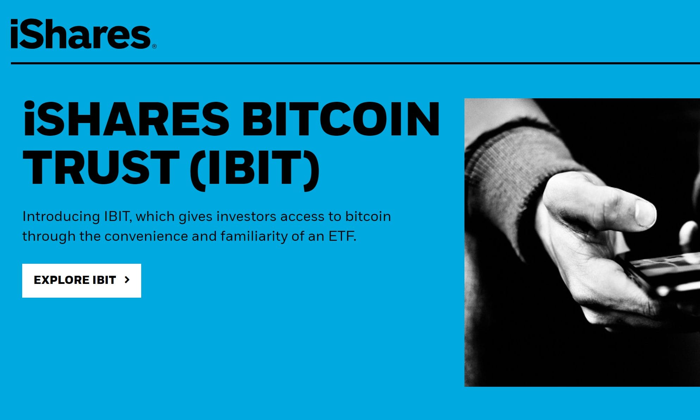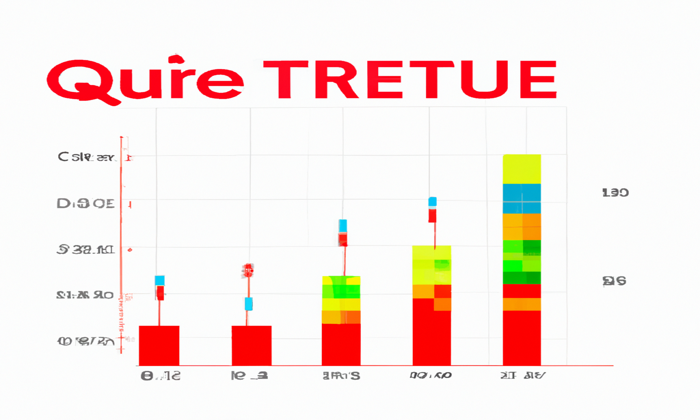Stablecoins adoption has surged as financial institutions increasingly recognize their potential to enhance the efficiency of cross-border payments. Recent reports indicate a significant shift in the stablecoin market growth, with many firms overcoming prior uncertainty and establishing robust frameworks for integration. The institutional adoption of stablecoins is now at an all-time high, driven by a combination of regulatory clarity and increasing demand for faster settlement times. As organizations prioritize the enhancement of their payment systems, the appeal of stablecoins continues to rise, particularly among banks and payment providers seeking to optimize their operations. This transition highlights the evolving landscape of the stablecoin regulatory environment, paving the way for wider acceptance and strategic use within financial ecosystems.
The increasing acceptance of digital currencies that maintain their value through pegging to stable assets marks a pivotal moment in modern finance. As businesses explore alternative payment methods that mitigate traditional banking hurdles, the focus has shifted towards harnessing these stable digital currencies for seamless international transactions. Institutions are not only embracing these digital assets but are actively streamlining their operations to accommodate the demands of a rapidly evolving market. This transformation indicates a renewed trust in the mechanisms governing such currencies, particularly in how they can facilitate faster, more reliable transactions across borders. Amidst a changing regulatory landscape, the drive towards broader acceptance of these digital currencies represents a fundamental shift in global financial practices.
Understanding Institutional Adoption of Stablecoins
The rise of institutional adoption of stablecoins marks a significant transformation in the financial landscape. As institutions overcome earlier uncertainties, stablecoins are being integrated into mainstream operations, especially amidst a backdrop of enhanced regulatory clarity and technological readiness. Recent surveys indicate that a staggering 86% of firms have positioned themselves with the necessary partnerships and infrastructure to support stablecoin use, highlighting a clear shift from mere exploration to operational implementation.
Moreover, nearly half of the responding institutions are actively utilizing stablecoins for various payment solutions. With over 20% of participants either piloting or preparing for implementation, the momentum is overwhelmingly positive. This reflects a broader trend of financial institutions recognizing stablecoins as not just a technological novelty but as a credible, strategic asset for improving operational efficiencies.
Cross-Border Payments with Stablecoins: A Growing Trend
The growing trend of utilizing stablecoins in cross-border payments is becoming increasingly critical as institutions seek to modernize their financial infrastructure. With traditional banking systems often bogged down by delays and high costs, stablecoins provide an innovative solution for facilitating real-time transactions across borders. According to recent reports, 58% of banks acknowledged that cross-border payments are the primary area where stablecoins can make a transformative impact.
Additionally, institutions are prioritizing speed and efficiency, with 48% of respondents identifying faster settlement times as a core advantage of stablecoin transactions. This is particularly significant in high-volume markets where quick and cost-effective payment solutions are paramount. The integration of stablecoins into legacy financial systems signifies a move towards a more efficient, transparent, and accessible global payment ecosystem.
The Impact of Stablecoins on Financial Institutions
Stablecoins are reshaping the operations of financial institutions by streamlining processes and supporting new business models. As traditional payment systems struggle to adapt to the demands of a rapidly changing market, financial institutions are pivoting towards stablecoins to reclaim their competitive edge. With an overwhelming majority of institutions now viewing stablecoins as essential infrastructure, the focus is shifting to ensure robust operational integration.
The growing reliance on stablecoins also indicates a shift in institutional attitudes towards crypto assets. Instead of seeing these digital currencies merely as speculative investments, banks and financial service providers recognize their potential in enhancing efficiency and driving revenue growth. This sentiment is underscored by reports indicating that a large percentage of institutions are leveraging stablecoins to enter new markets and cater to evolving customer demands.
Challenges and Solutions in Stablecoin Adoption
While the adoption of stablecoins by financial institutions is on the rise, several challenges remain. Compliance concerns, once a significant hurdle for 74% of institutions, have seen a remarkable decrease, with only 18% now reporting them as an issue. This shift can largely be attributed to clearer regulatory frameworks and advancements in compliance technology. However, while regulatory friction diminishes, other concerns, such as internal technical capabilities, still require attention as firms scale their operations.
To facilitate further adoption, institutions must focus on developing robust assistance programs that address skills gaps and enhance user experiences with stablecoin systems. Furthermore, continued investment in regulatory technology (RegTech) will be essential for ensuring that compliance measures evolve alongside the growing landscape of stablecoin usage.
The Role of Regulation in Stablecoin Growth
The regulatory environment surrounding stablecoins is crucial in determining their widespread adoption among financial institutions. As governments worldwide enact clear guidelines and standards, the market no longer views stablecoins as a risk-laden venture but rather as an essential operational component. Enhanced regulatory clarity has helped diminish uncertainties, allowing firms to invest and innovate confidently within the stablecoin ecosystem.
Consequently, as the stablecoin market expands, the development of comprehensive regulatory standards will likely enhance consumer trust, bolstering institutional confidence. Ongoing global discussions about standardization and best practices in the regulatory space will further aid firms in aligning their strategies to utilize stablecoins effectively.
Adoption Drivers of Stablecoins in Institutional Finance
Several key drivers fuel the adoption of stablecoins within institutional finance. Initially perceived primarily as tools for improving cost efficiencies, stablecoins are now recognized for their potential to generate new revenue streams and expand market reach. Institutional respondents have identified customer demand for stablecoin-related financial products, thus aligning their offerings with market expectations and fostering further growth.
Additionally, stablecoin adoption is being encouraged by the increasing focus on infrastructure performance. As institutions prioritize fast and reliable settlements along with compliance transparency and liquidity access, the shift from traditional to digital financial frameworks becomes evident. This evolution signifies a transformative phase where stablecoins are embraced not only as a payment method but as a core asset class in finance.
Market Insights: Stablecoins and Financial Landscapes
As the total stablecoin market cap approaches $238 billion, it is crucial to examine the implications this growth has on financial markets. The integration of stablecoins into payment systems reflects a progressive shift towards decentralized finance that blends traditional practices with innovative digital solutions. This movement highlights a broader trend where institutions recognize digital currencies as vital to the future of finance.
Moreover, the analysis of use cases reveals that beyond cross-border payments, stablecoins are gaining traction in areas such as payment acceptance and treasury optimization. Institutions leveraging stablecoins are redefining competitive advantages while responding to evolving customer preferences in an increasingly globalized economy.
Future Prospects of Stablecoin Use in Banking
The future of stablecoin integration in banking heralds exciting possibilities as institutions align their strategies with emerging technologies. Financial institutions are poised to leverage stablecoins for meeting consumer demand for fast, efficient, and secure transactions, paving the way for a new era in operational practices. The prospective advantages of stablecoins, such as enhanced security and fraud protection, further motivate banks to embed these technologies within their infrastructures.
With the anticipated developments in regulations and technology, we can expect an even more pronounced integration of stablecoins in banking operations. The convergence of fintech innovation and regulatory advancements will ultimately drive widespread implementation, setting new benchmarks in transaction speeds and cross-border payment efficiencies.
Stablecoins: A Key Component of Modern Financial Infrastructure
Stablecoins are gradually being recognized as an integral part of modern financial infrastructure. As firms maneuver through the evolving economic landscape, the demand for stable, reliable, and swift transaction methods is paramount. By embracing stablecoins, institutions can enhance their operational capabilities and provide customers with innovative financial solutions that cater to the needs of a diverse client base.
The strategic integration of stablecoins not only addresses the challenges of traditional banking but also demonstrates a forward-thinking approach to finance. With many institutions considering stablecoins as an essential part of their offerings, it is clear that these digital assets are set to play a pivotal role in shaping the future of financial services.
Frequently Asked Questions
What factors are driving the institutional adoption of stablecoins?
The institutional adoption of stablecoins is primarily driven by improved infrastructure performance and compliance automation, as well as rising customer demand for stablecoin products. Over 40% of firms also see stablecoins as a means to enter new markets and expand revenue opportunities, transitioning from pilot testing to scaled implementation.
How does stablecoin market growth affect cross-border payments?
Stablecoin market growth significantly enhances cross-border payments by providing faster and more transparent transaction methods. With 58% of traditional banks identifying cross-border payments as the primary use case for stablecoins, this shift helps to mitigate the inefficiencies and high costs associated with legacy correspondent banking systems.
What is the current regulatory environment for financial institutions using stablecoins?
The stablecoin regulatory environment has improved, with only 25% of institutions citing regulatory uncertainty as a concern, down from 85%. Clearer national regulations and enhanced compliance frameworks have contributed to rising confidence among financial institutions regarding stablecoin adoption.
Why are financial institutions emphasizing the use of stablecoins?
Financial institutions are emphasizing stablecoins for multiple reasons including faster payments, enhanced security, and better customer demand. A significant portion, nearly 49%, are actively using stablecoins for payments, viewing them as essential infrastructure to modernize operations and improve market share.
What role do stablecoins play in treasury optimization for institutions?
Stablecoins play a vital role in treasury optimization, allowing institutions to achieve faster settlement times and integrate their payment processes. With the increasing realization that stablecoins can improve operational efficiency, firms are incorporating stablecoin rails into their core treasury and enterprise resource planning systems.
How has the perception of stablecoins changed among institutions?
The perception of stablecoins among institutions has shifted from viewing them as speculative assets to recognizing them as strategic tools for enhancing financial operations. With a growing emphasis on cross-border transactions, stablecoins are now seen as key components of global financial infrastructure.
What are the main benefits of using stablecoins in cross-border transactions?
The main benefits of using stablecoins in cross-border transactions include faster settlement times, reduced fees, and increased transparency compared to traditional banking methods. Institutions increasingly prioritize speed, with nearly 48% citing faster settlement as a primary stablecoin feature.
What challenges do institutions face with stablecoin adoption?
Institutions face fewer challenges with stablecoin adoption than in previous years. Concerns about compliance and technical expertise have significantly decreased, indicating an increasing trust in stablecoins, where only 18% cite compliance as a barrier, compared to 74% previously.
How do customer demands influence stablecoin adoption?
Customer demands play a crucial role in stablecoin adoption as 75% of institutions report that there is clear demand for stablecoin-based products. This customer interest drives institutions to integrate stablecoins into their services, facilitating broader market acceptance and use.
What trends are being observed in stablecoin regulatory developments?
Trends in stablecoin regulatory developments show a move toward clearer national regulations and global harmonization on policies. This aligns with enhanced compliance measures, resulting in significant improvements in the adoption landscape among financial institutions.
| Key Points | Details |
|---|---|
| Institutions’ Adoption Level | 86% of surveyed firms have systems for stablecoin integration. |
| Active Usage | 49% actively use stablecoins for payments, 23% in pilots. |
| Barriers Decline | Only 18% cite compliance concerns, down from 74%. |
| Key Drivers | Fast payouts and regulatory transparency are top requirements. |
| Broad Demand | 58% of banks say cross-border payments are the main use case. |
Summary
Stablecoins adoption is gaining momentum as institutions increasingly recognize their potential for modernizing financial transactions. The confidence in stablecoins among financial institutions has hit an all-time high, significantly reducing barriers to entry and reflecting a decisive shift towards mainstream acceptance. With overwhelming demand for faster, global transaction capabilities driving the push for stablecoin integration, it is clear that the landscape of finance is evolving. As these digital assets become fundamental to operational strategies, the stability and efficiency they offer are reshaping how institutions engage in cross-border commerce.
Stablecoins adoption has been gaining remarkable momentum as institutional players rapidly embrace this innovative financial solution. Recent insights reveal that institutional adoption of stablecoins is at an all-time high, driven by a demand for efficiency in cross-border payments. Financial institutions now actively utilize these digital currencies, signaling a shift from traditional payment methods to a more agile approach. With declining regulatory friction and growing trust, the stablecoin market growth appears poised for significant expansion. As organizations redefine their strategies, stablecoins are becoming integral to modern financial ecosystems, enhancing transaction capabilities while ensuring compliance with evolving regulatory environments.
The widespread acceptance and utilization of stablecoins represent a transformative moment in the finance sector. Many organizations are now recognizing these digital assets as essential tools for improving payment systems and enhancing cross-border transactions. Institutions show an increasing reliance on these tokenized currencies, as they provide stability in a volatile market while addressing the inefficiencies of traditional payments. Furthermore, various financial entities are adapting to the changing regulatory landscape, promoting a more streamlined integration of stablecoins within their operational frameworks. This growing trend underscores the potential of digital currencies to reshape financial transactions and drive global economic connectivity.















Leave a Reply